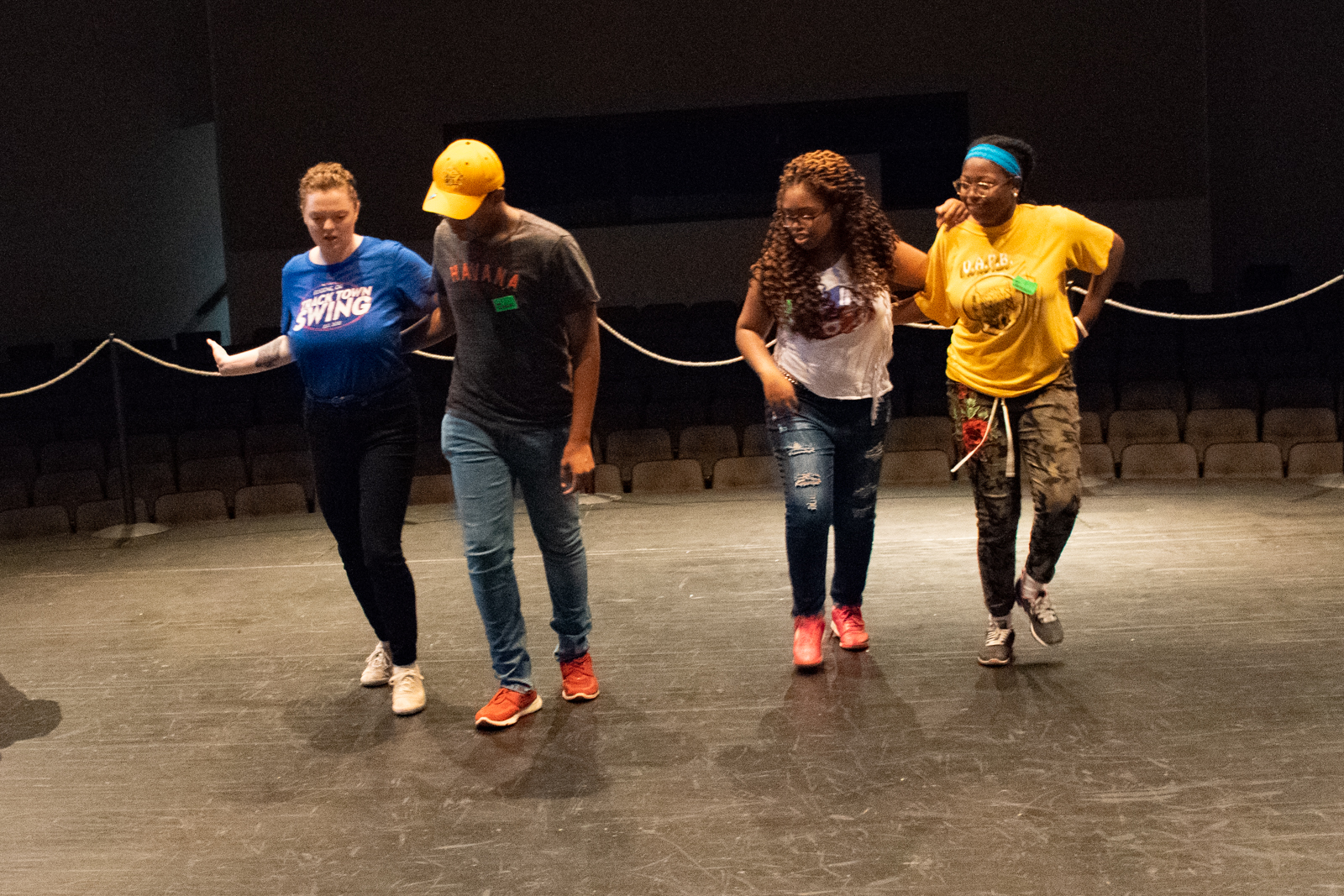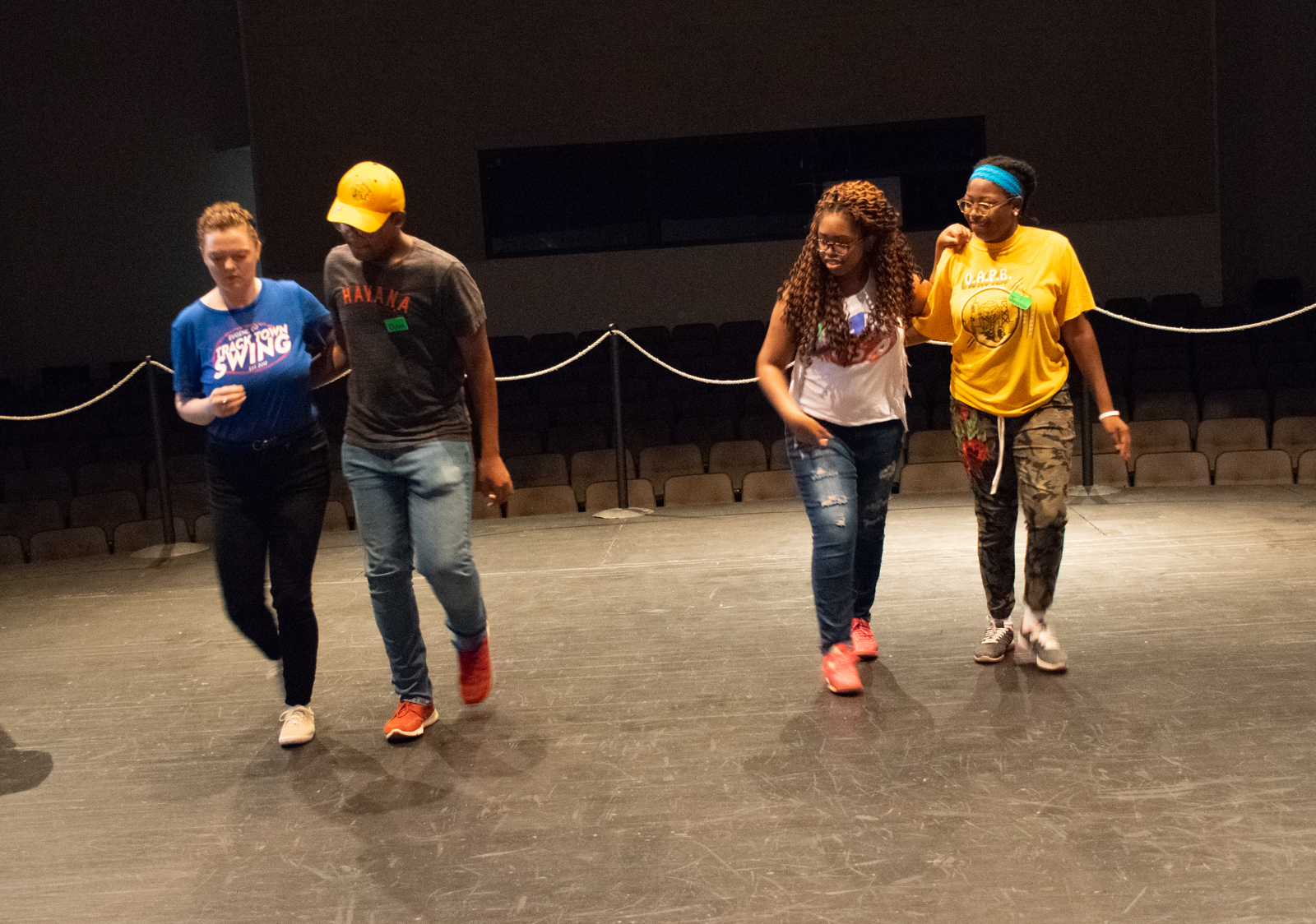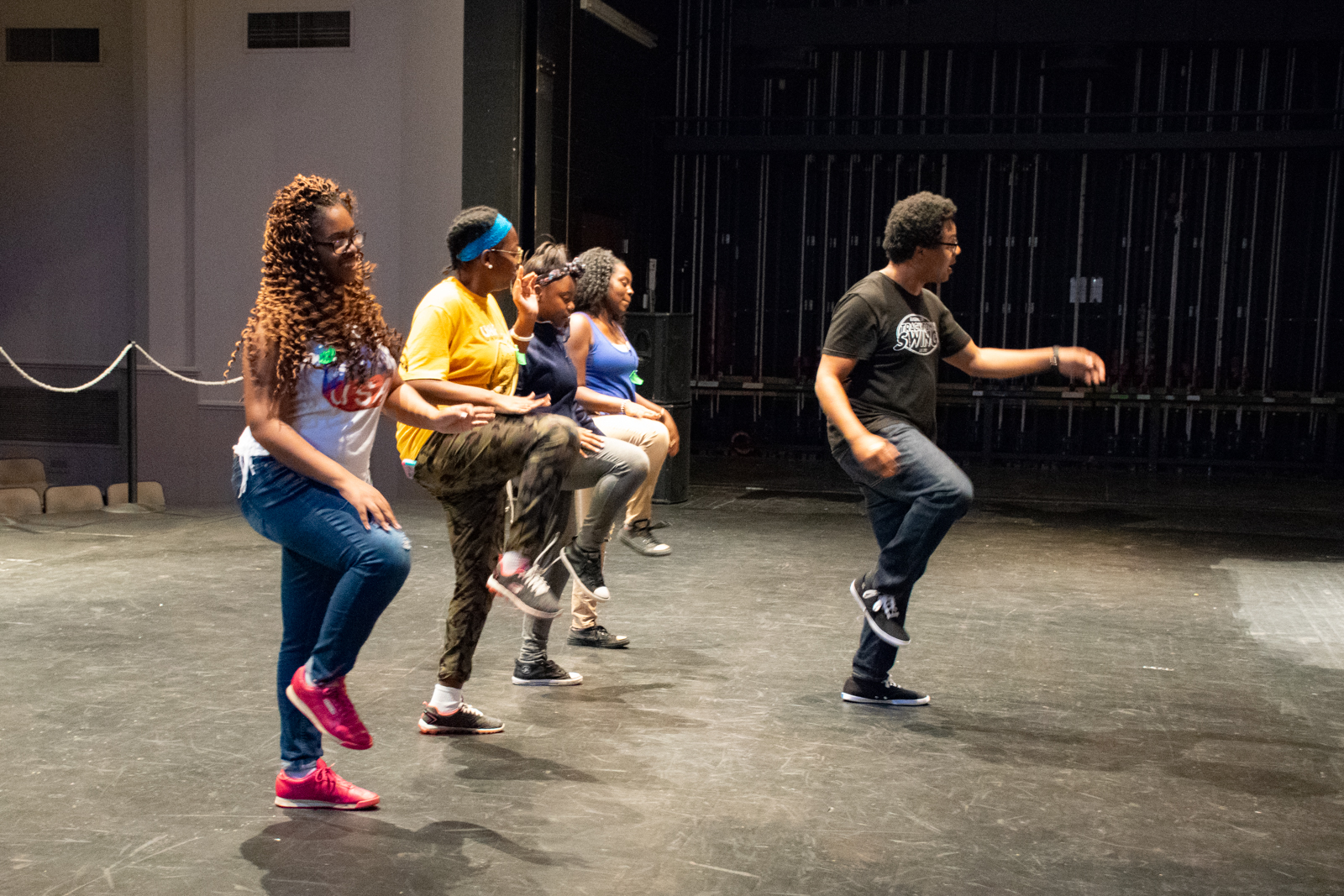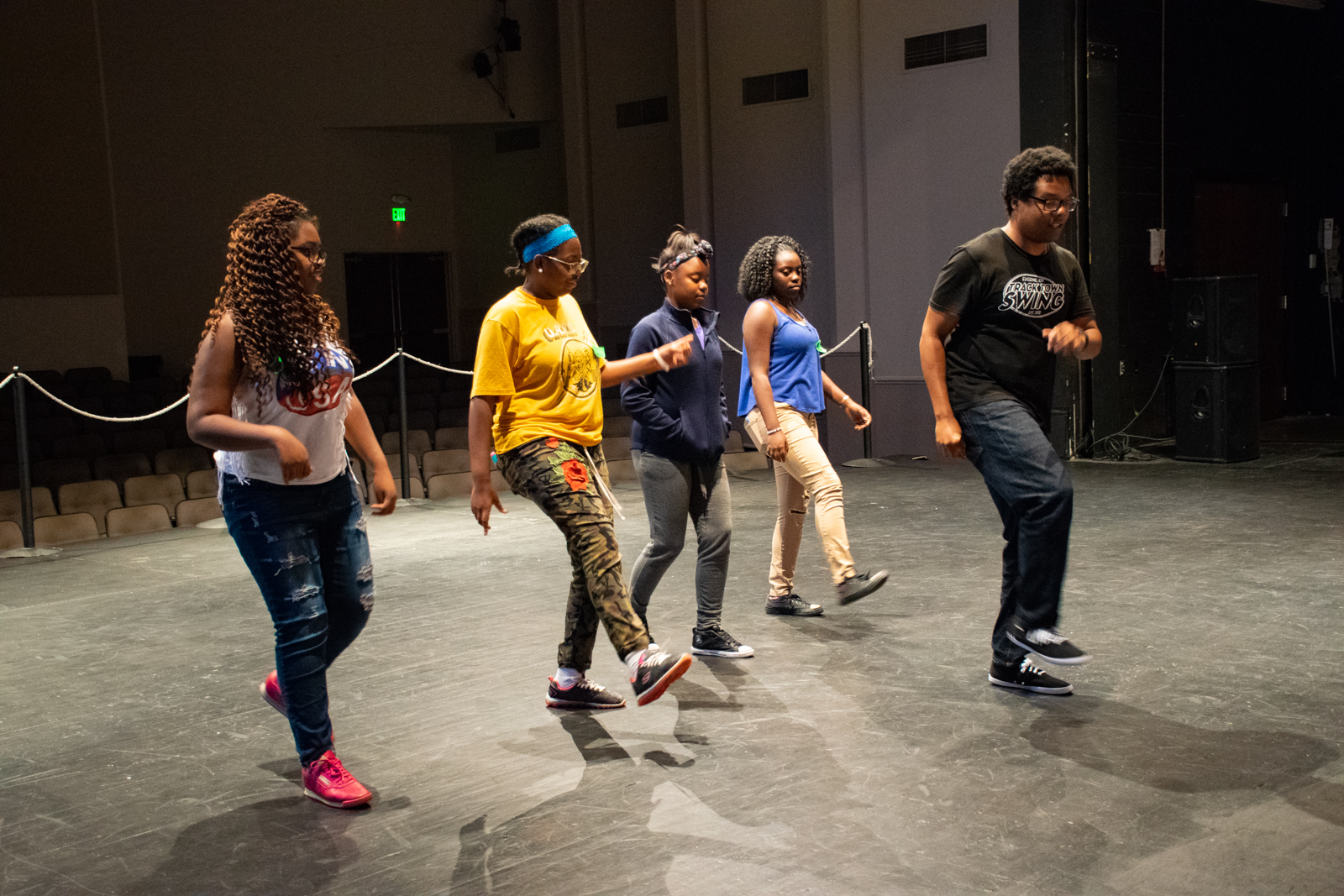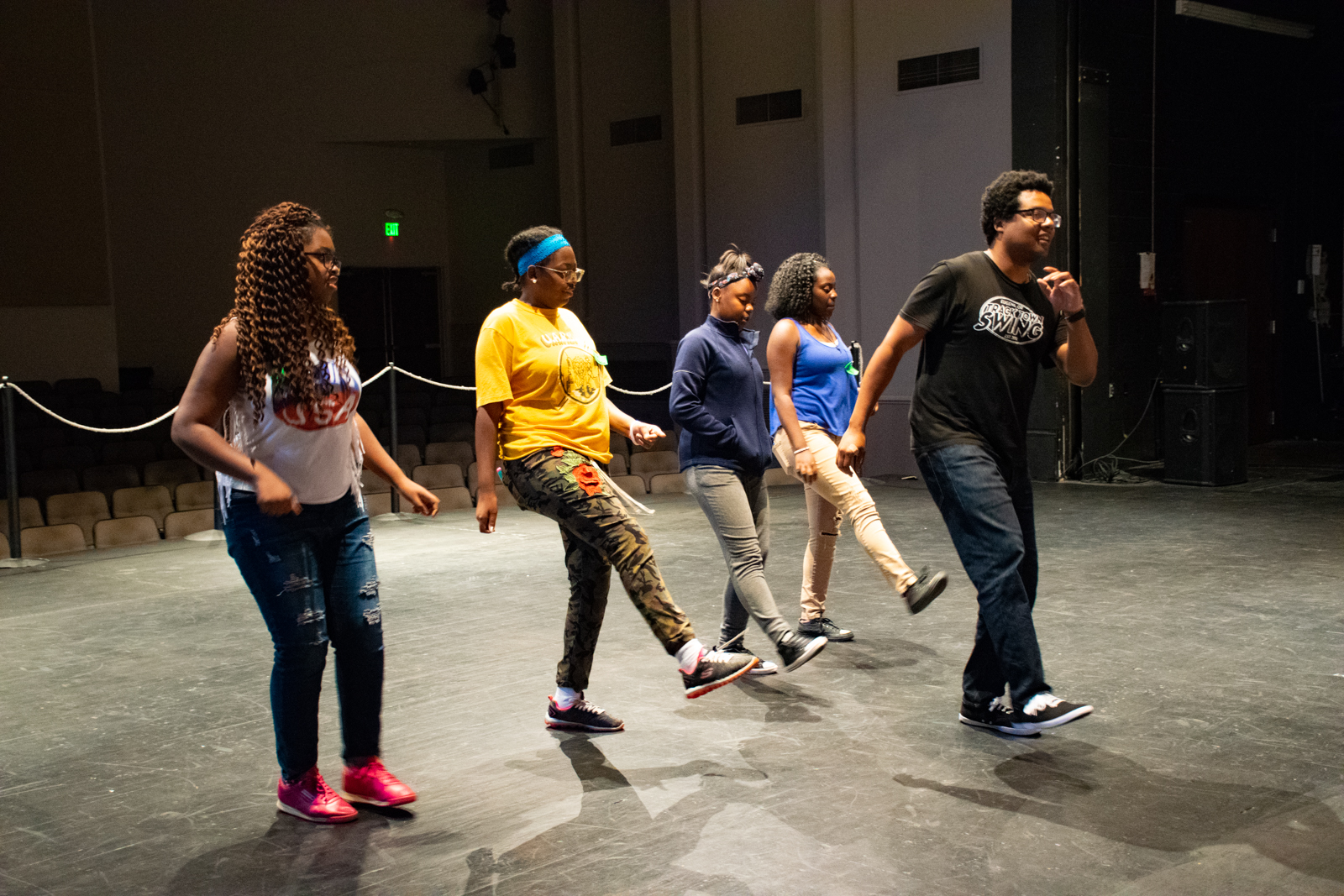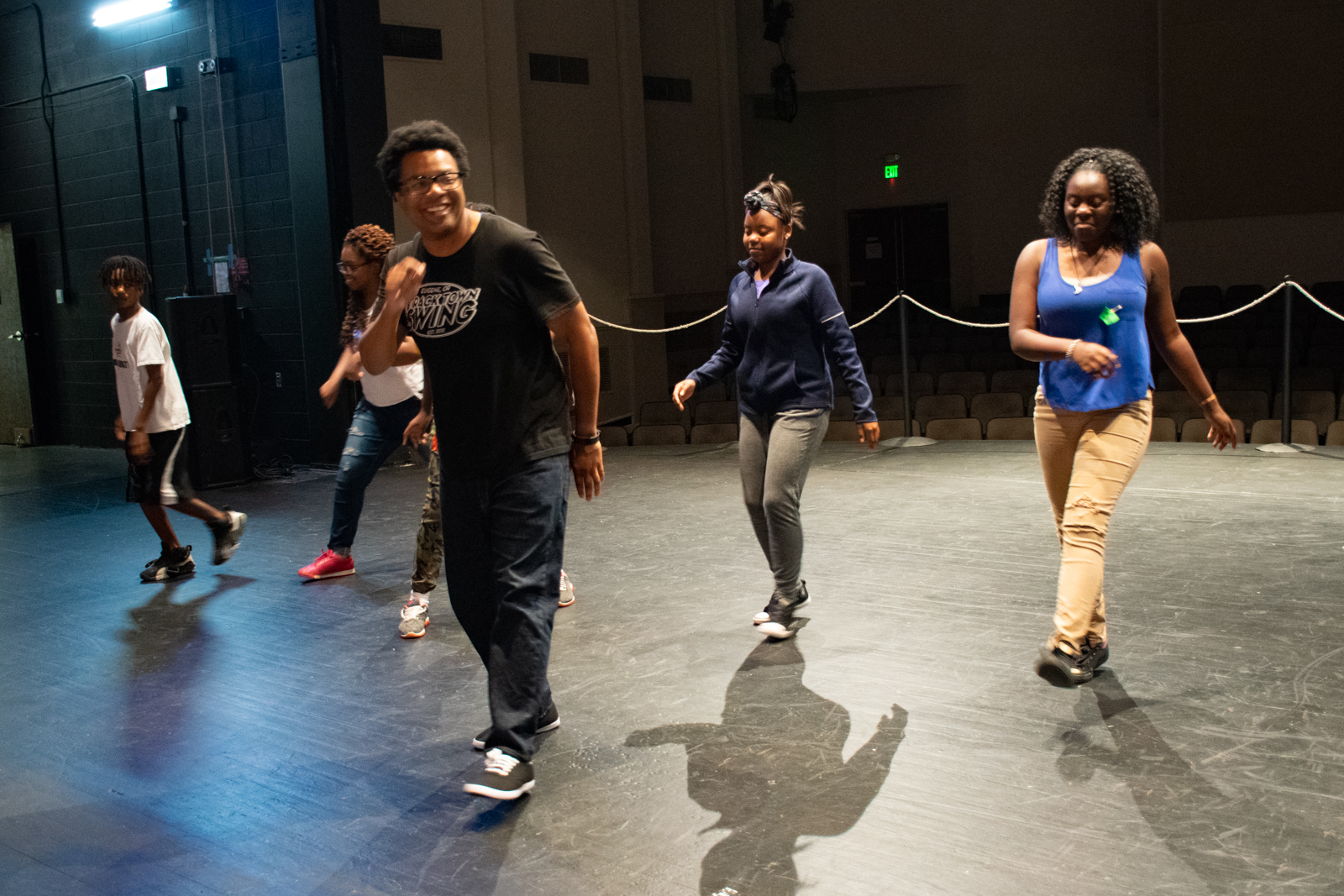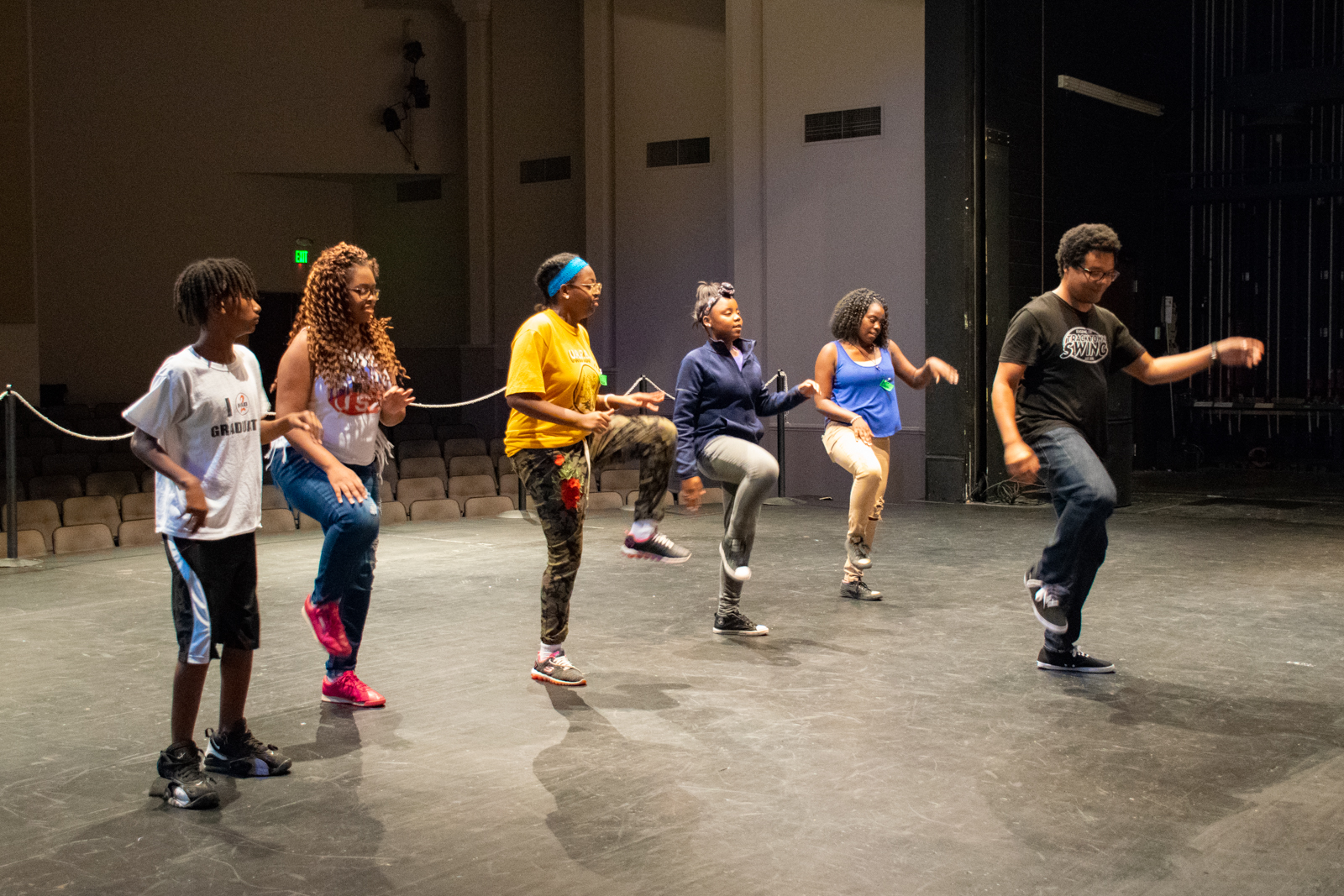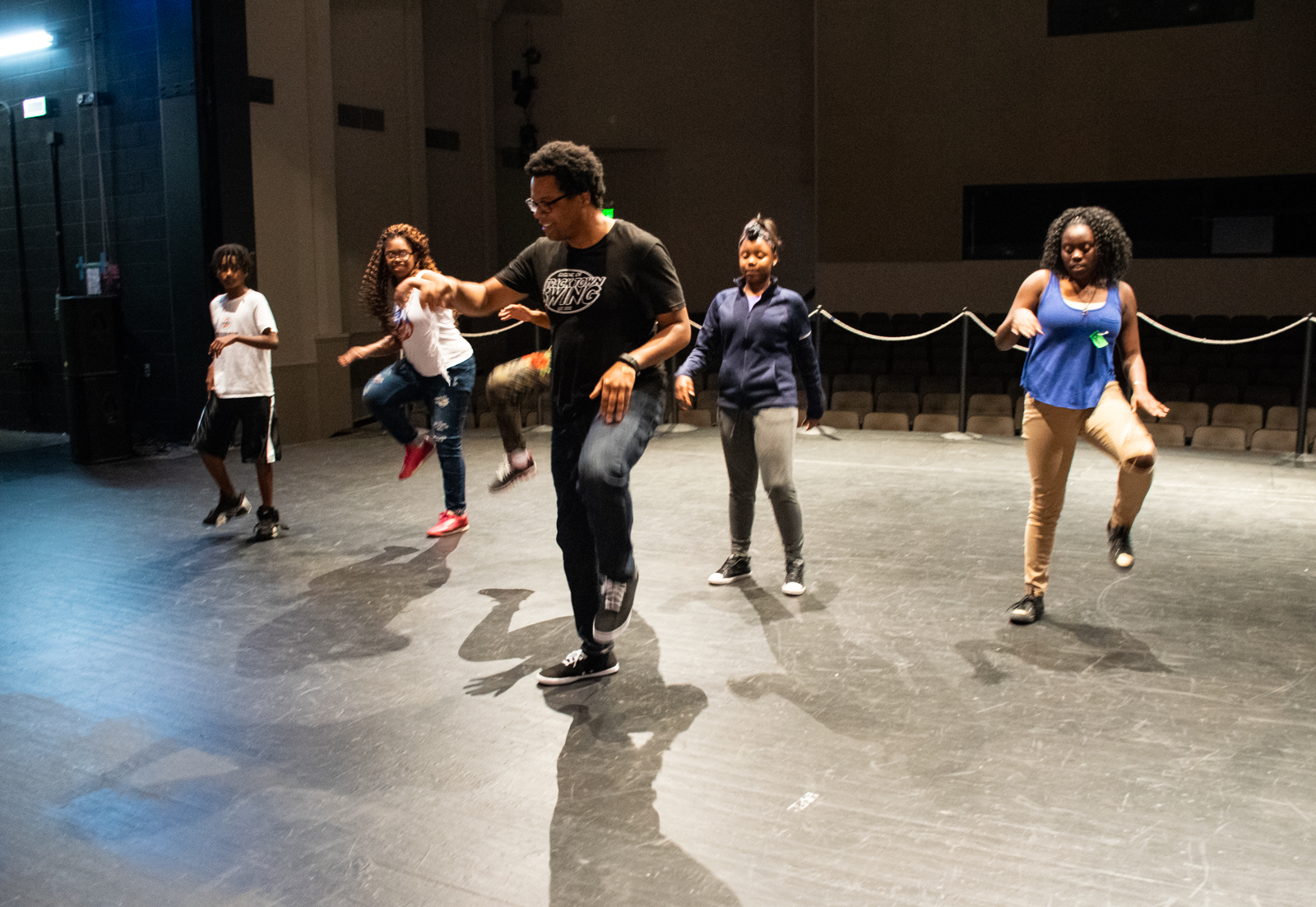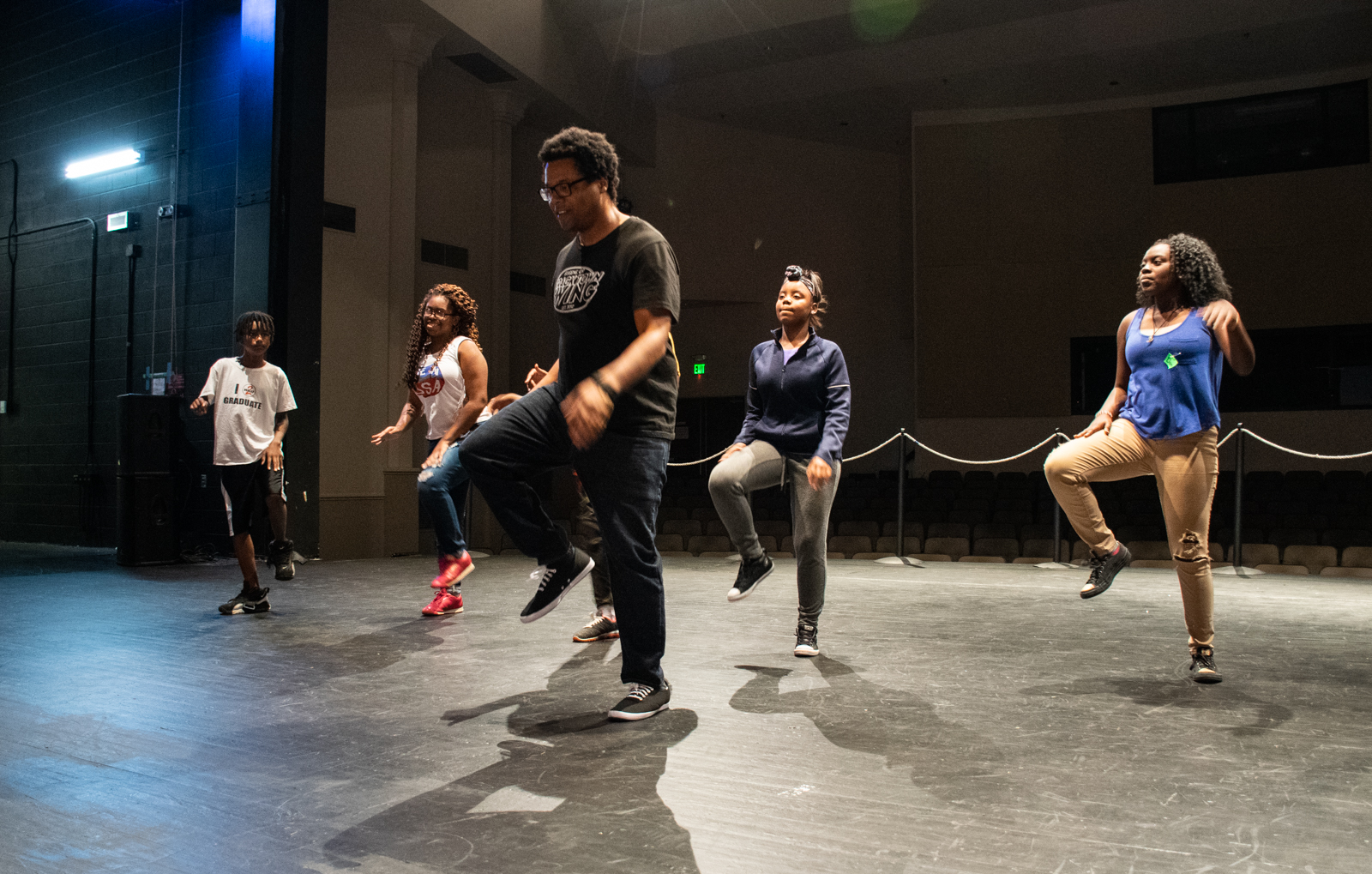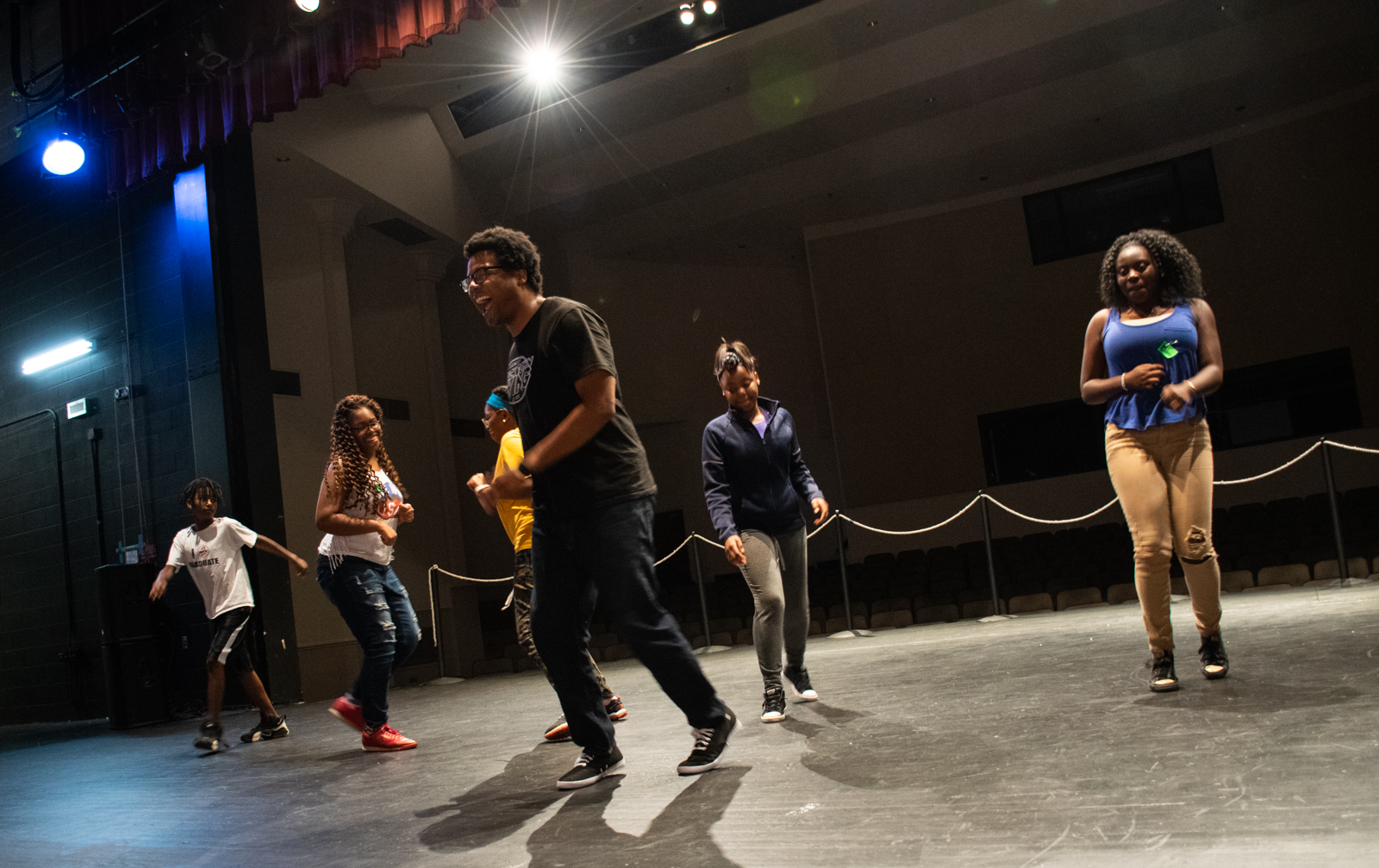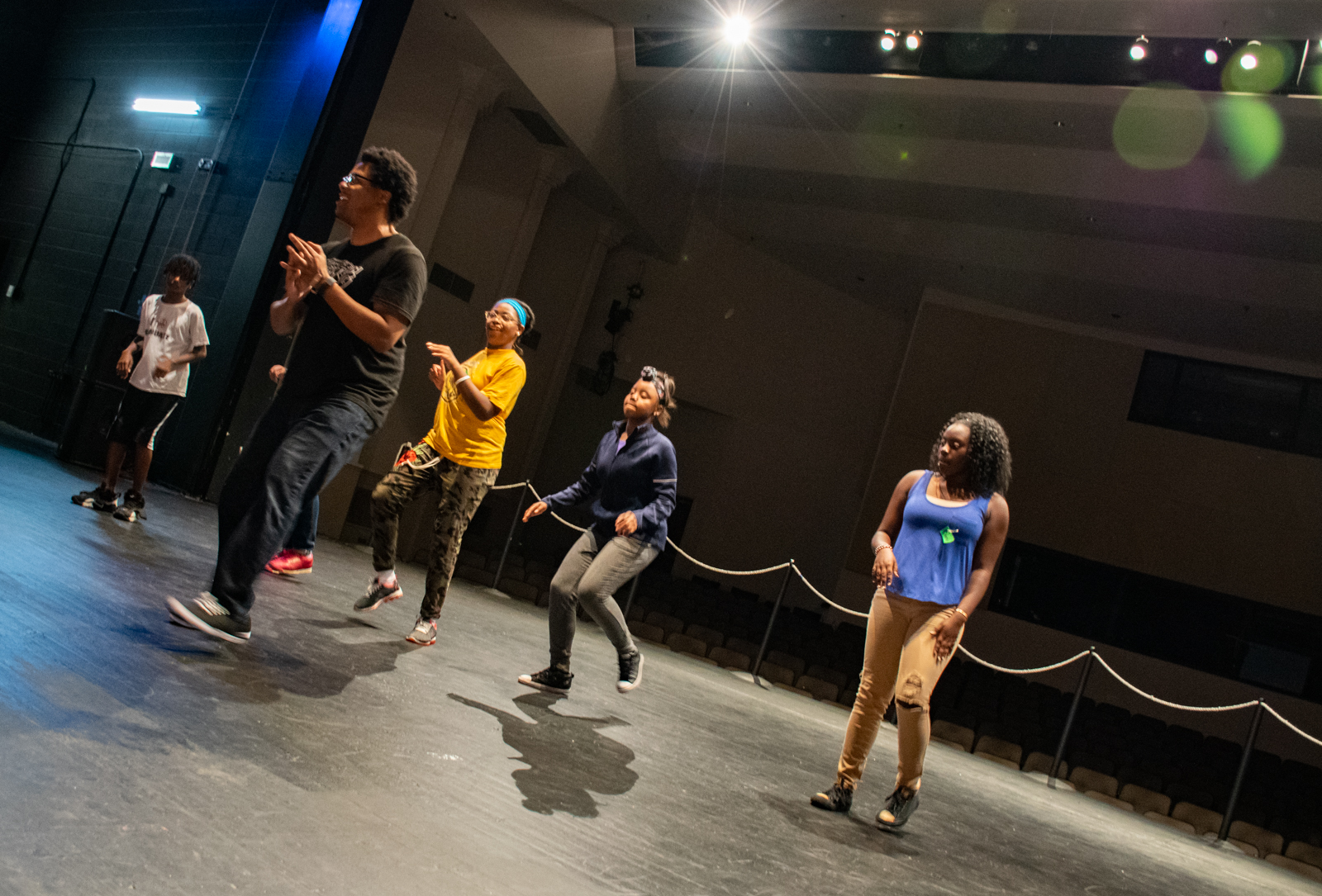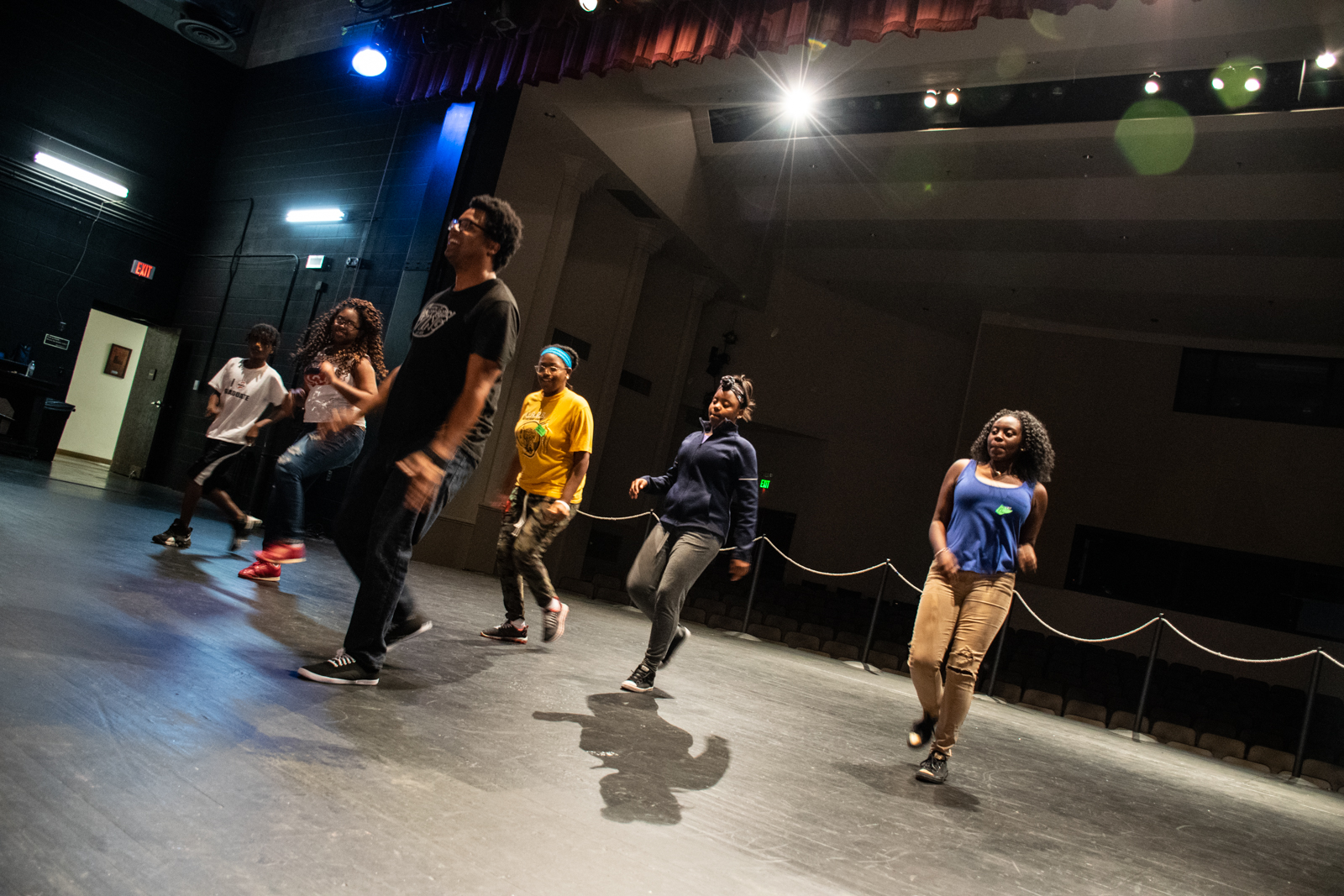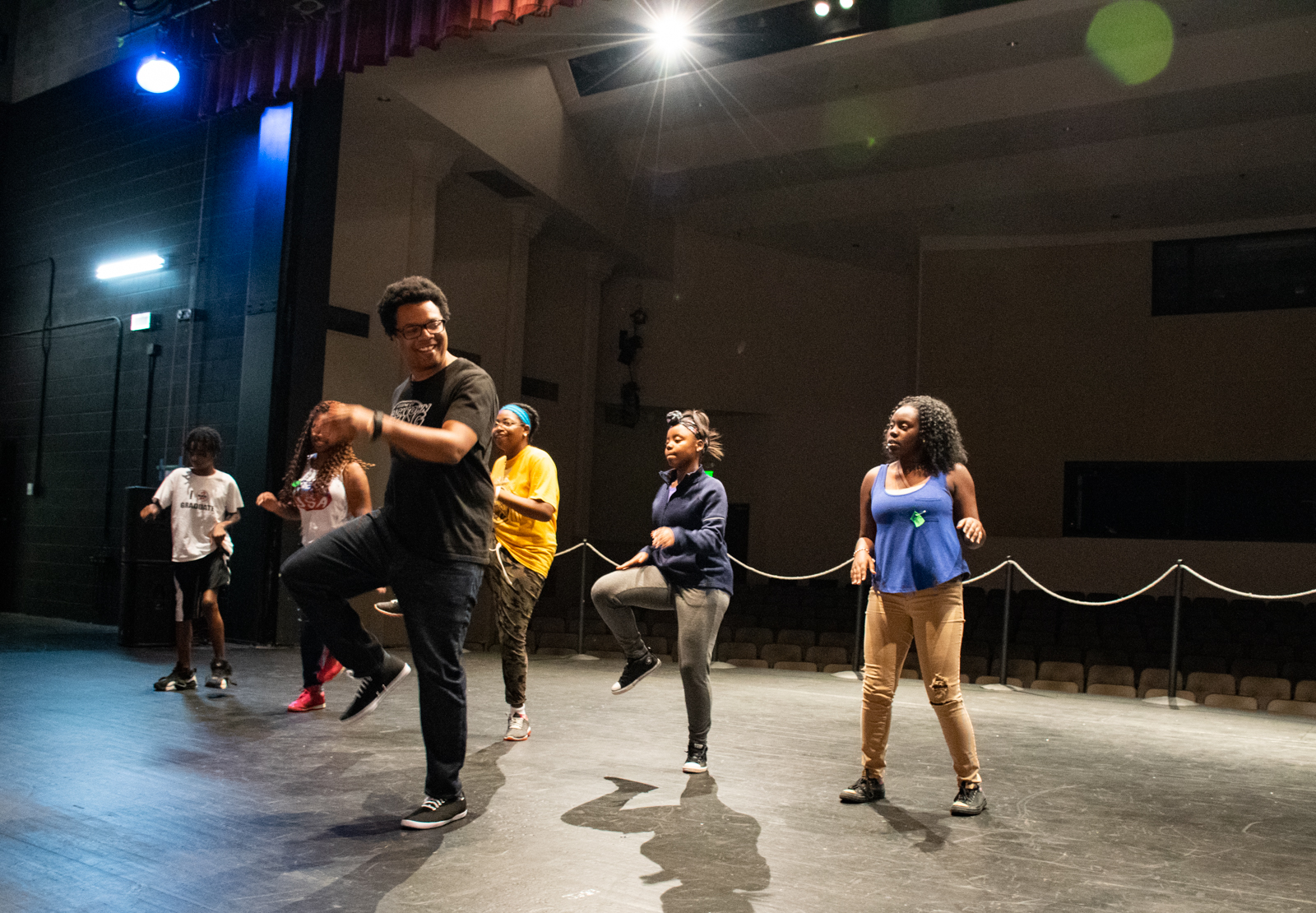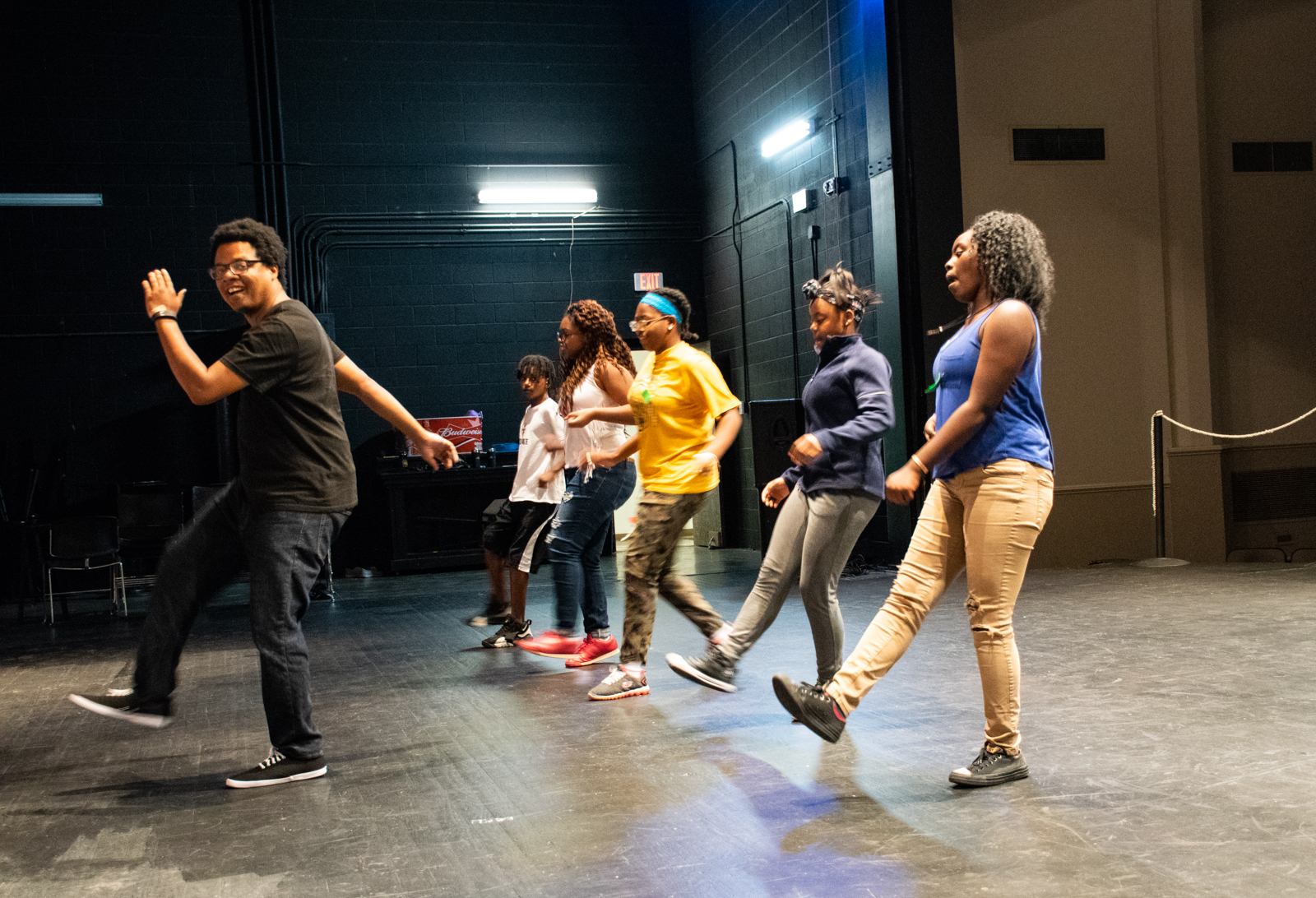Interdisciplinary Camp Immerses Middle-Schoolers in Swing, Jazz Era
/Special guest instructor Nick Davis of Eugene, Oregon, teaches jazz and swing dance moves during ASC's summer program "Swing, Art, and all that Jazz," held July 30-Aug. 1. The program — open to students in seventh, eighth, and ninth grades — was funded by a grant from the Arkansas Department of Education.
By Shannon Frazeur
Students were immersed in the jazz and swing culture of the 1920s, ’30s, and ’40s during ASC’s recent “Swing, Art, and All That Jazz” summer program. The camp, held July 30-Aug. 3, introduced seventh-, eighth-, and ninth-graders to the dances, music, and culture of this period.
Although dance and music were central, the camp wasn’t all about performance. The camp also incorporated art, history, and culture of the era — particularly pertaining to African-Americans — along with videography, into a multidisciplinary program which culminated in a video the students shot and edited themselves.
"Untitled (Dancers)," Palmer C. Hayden, Watercolor and paper, 1927. From the Permanent Collection of the Arts & Science Center for Southeast Arkansas.
The camp was made possible by a grant from the Arkansas Department of Education, through its Academic Enrichment for the Gifted/Talented in Summer (AEGIS) program. The AEGIS programs provide unique learning opportunities in specific areas for gifted students in Arkansas. “Swing, Art, and All That Jazz” was one of eight AEGIS programs funded for 2018. The camp was open to students in Arkansas at no cost to them.
ASC welcomed special guest instructor Nick Davis of Eugene, Oregon, for the week. Davis is founder of a nonprofit swing dance organization, Track Town Swing, in Eugene. He is also a Frankie Manning Ambassador with the Frankie Manning Foundation, a nonprofit organization dedicated to the preservation and instruction of traditional swing dancing. Davis has traveled nationally and internationally to teach and DJ at swing dance events.
Davis introduced the students to traditional swing and jazz dance routines such as the “Lindy Hop,” the “Shim Sham,” the “Charleston,” and “The Big Apple.”
A swing and jazz era painting from ASC’s Permanent Collection served as inspiration and a point of context for the class. Palmer C. Hayden’s 1927 watercolor “Untitled (Dancers)" depicts two African-American couples dancing with a swing and jazz band. Note: “Untitled” (Dancers) is on display now through Oct. 27 in ASC's William H. Kennedy Jr. Gallery.
Each morning, the students learned a new dance style or routine, and in the afternoon, they discussed it as a group and decided what was the most interested part of what they learned that day — both in terms of the dance and the contextual information that they learned about it, ASC Public Programs Coordinator Leonor Colbert explained.
The students then split into two groups. One group returned to the stage with Davis to perfect the final choreography and record themselves performing the dance moves they learned earlier that day. The second group created a script, providing interpretive context for that particular dance move. Then they audio recorded themselves reading the script. With the support of ASC Digital Media Specialist Ashley Smith, both groups came back together to edit the video and audio clips. By the end of the week, they had completed a 3-and-a-half minute video that not only demonstrates dance moves they learned, but provided interpretation about African-American dance history, especially related to the period most relevant for the 1927 Hayden painting.
The first day of camp also included an art and behind-the-scenes tour with ASC Curator Dr. Lenore Shoults. The tour provided context on visual art as a means of working through challenging ideas and some of the politics of representation, especially art depicting African-Americans, Colbert said.
The discussion continued Tuesday with guest speaker Jimmy Cunningham Jr., CEO of the Delta Rhythm ‘n’ Bayous Alliance and author of two books focusing on southeast Arkansas’ musical and arts cultural history and heritage. Cunningham, a Pine Bluff native, discussed regional connections between swing music, Delta blues, and hip-hop music. He also spoke on how music has always been a means of working through and expressing intense emotion.
“He was talking about music on the edge — ‘super black music,’ as he called it, and how that has changed over the years,” Colbert said. “What’s pushing the boundaries — there always has to be something new coming after it, but that idea has been continuous. So he had an intergenerational panel that had folks that were involved in various dance scenes, ranging from the 1950s to the 1990s, and they talked about the music, the cultural scene, what people were wearing and doing and talking about how they danced to that music. And then the kids got the chance to share a little of the music of what they are listening to now. So it was a really nice intergenerational exchange; that continuity, even though the music styles sound very different.”
The students also created individual works of visual art inspired by the pieces they saw during their curatorial tour. They could choose to either make a figurative work of art (like the Hayden watercolor) or a more abstract work of art.
“They’re identifying a discrete source of inspiration — whether it’s photo or a dance clip or a piece of music,” Colbert explained. “And they’re deciding on their media, which is either acrylic or watercolor or collage. So there is a lot of choice. There is a lot of learner-driven experience in this, where we’re not forcing them into pigeonholes in which they have to all do the same thing.”
Unlike many dance-based programs, there was no public performance.
“We are learning some routines that are from performances, but a lot of what they are learning are vernacular art forms or social art forms that are meant to be improvised or meant to be experienced with people and not on a stage in front of somebody. It loses a lot of the spontaneity that makes it special when you codify it in a package to be performed.”
Colbert, a longtime dancer herself, developed the curriculum and program proposal.
“It’s something that I’ve always really loved and appreciated its ability to bring very diverse people together. It’s just a very joyful, fun thing.”
Colbert also saw the potential for the program to introduce weightier topics.
“I particularly wanted to do this kind of camp that was focusing on interdisciplinary aspects, using dance and music as an entry point for larger conversations, especially as it relates to race, race representation, commodification of racial art and how it is consumed, and the power dynamics that come into play with African-American art forms,” she said. “Because in recent years, in the jazz and swing dance community nationally and internationally, there have been a growing momentum in the conversation about race and racism in the dance scene because it is a historically African-American art form, that is largely appropriated and performed by white people.
“So I felt that was something that was really important to a large community of artists, jazz dancers and jazz musicians, and I thought that the Arts & Science Center was uniquely well-positioned to start that conversation,” she said.
Nick Davis' ’Crazy Journey’
Nick Davis’ love for swing and jazz dance has taken him beyond the U.S. borders, as far away as Sweden.
His interest began in 1998 in Eugene after he started taking hip-hop and R&B dance classes. Those classes led him to other styles and, eventually, Lindy Hop swing.
“I found out that I really liked that kind of music,” he said.
Noticing his interest, his dance teacher told him there was a fellow teacher in town who specializes in swing. Denise Steele was a prominent teacher on the scene in the early 2000s, and would bring swing dance pioneer Frankie Manning to Oregon to teach workshops. Manning is widely considered the grandfather of Lindy Hop.
Although Manning was in his late 80s when Davis began taking class, he was still very active in the dance community and still teaching workshops.
“He would come to Oregon once or twice a year to pass on his wealth of knowledge to people. It was a pretty exciting time for me. So that helped me get connected to the dancing — not just to the dancing, but get connected to it from a cultural point.”
Davis connected to swing and jazz in a way that he didn’t with more contemporary dance and music styles.
“For me, I like hip-hop and all that stuff but it didn’t really resonate with me personally, and so hearing this style of music and this style of dance, to me, it felt much more elegant. It was something that was easier for me to get behind than just music that really, it paints a picture of more hardship than just kind of a lot of violence and a lot of things that I, personally, I understand but I’ve never really experienced. But with jazz, hearing more, getting more exposure to that, to me, it was more about songs about love and just trying to connect. And so I was like, OK, I feel this, this is resonating with me. So I was very happy to get connected to some swing dancing and jazz music.”
After the swing dance scene in Eugene faded, Davis returned to performing more contemporary jazz styles and hip-hop dance, he said. After Manning died in 2009 at age 94, Davis realized he wanted to return to the older dance styles.
“He definitely lived a good life, but that touched me to be like, ‘Oh, this person who I’ve been so inspired by is now no longer here — what does that mean for me?’” Davis said. “I was still dancing with my other group at the time but eventually the pull of ‘Let’s go back to swing dancing. Let’s try to connect with a person instead of just performing to seek attention, seek adulation.’ Getting back into social dance really helped me to feel like I was connecting with people on a more personal level.”
There still wasn’t much of a swing and jazz scene in Eugene but In 2012, Davis and a handful of other dancers began practicing together. Two or three people become 12 people, and when they held their first dance, 80 people showed up for what would become Track Town Swing. “So basically, I just put all my other dance stuff aside and focused on this ever since then.”
Davis was looking for ways to improve his teaching and applied for and was awarded the Frankie Manning Ambassador Scholarship, which included a three-week trip to Sweden, site of the world’s largest vernacular jazz dance camp.
“After that, I felt very inspired,” he said. From that opportunity, they were able to build up the scene in Eugene, and right now, Track Town Swing hosts five classes a week and regular dances.
Davis’ swing and jazz expertise goes beyond the dance floor. Although he still teaches quite a bit, he mostly works traveling as a DJ.
“For swing dance, what you want is to be able to have a live band play at your event,” he said. “It’s more fun, there’s a person there giving you something. You can’t always afford that, so obviously it’s really nice if you can get a person who is decent and knows enough about the music to rock the party by pressing play.”
Davis has worked as a DJ in the Pacific Northwest and Colorado. “And a few weeks ago, I was actually in Sweden as a DJ. So once again, we have this crazy situation where somehow I was able to get from Eugene, Oregon, to a village in Sweden where there is going to be hundreds of people staying up all night dancing, and I’m one of the people who is helping make that happen. It’s a crazy journey.”




